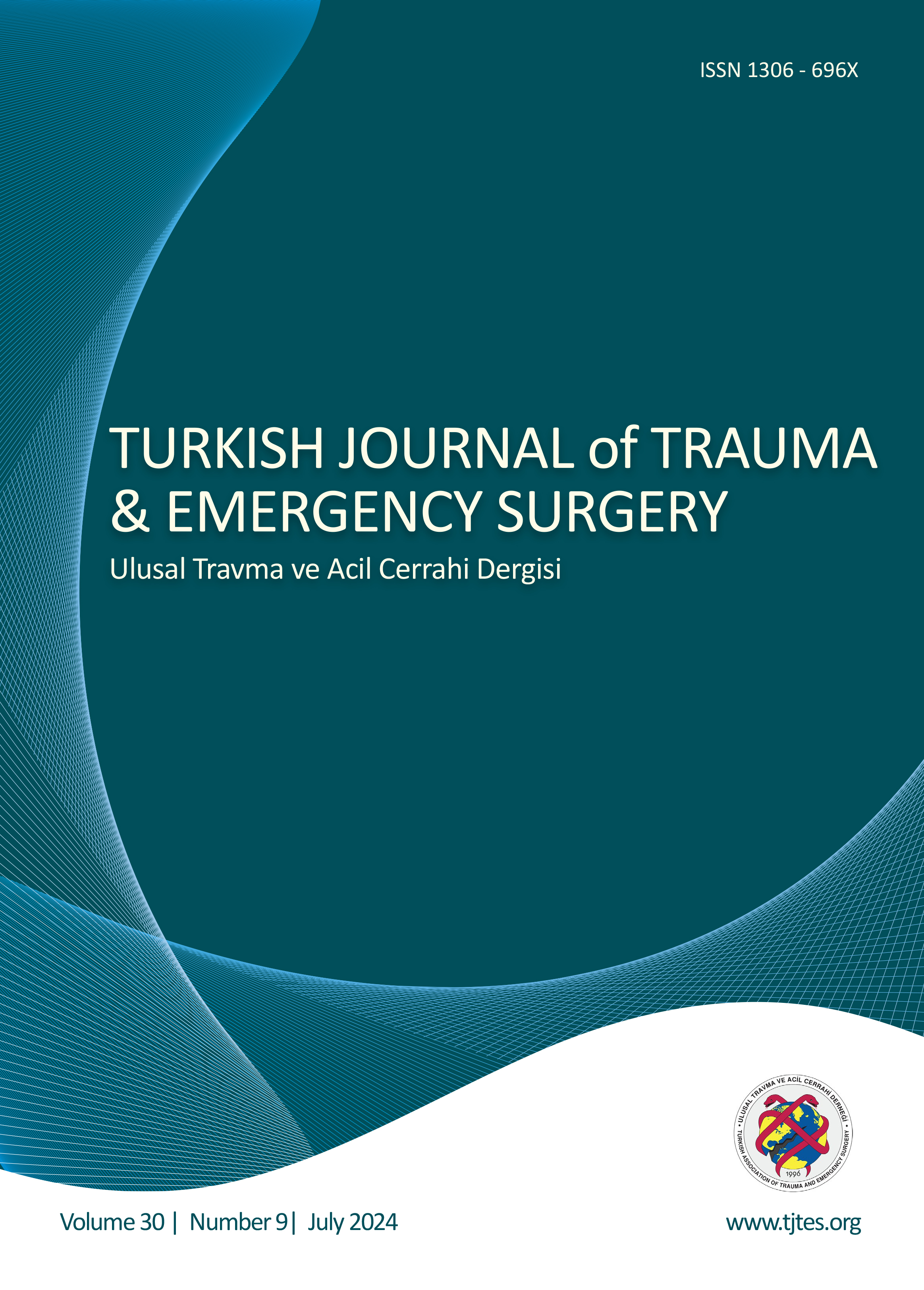Hızlı Arama
İnterkondiler humerus kırıklarının tedavisinde triseps reflekting pedikül ve olekranon osteotomisi yaklaşımlarının karşılaştırılması
İbrahim Azboy1, Mehmet Bulut1, Cahit Ancar1, Abdullah Demirtaş2, Emin Özkul1, Mehmet Gem1, Hilmi Karadeniz3, Hüseyin Arslan11Dicle Üniversitesi Tıp Fakültesi Ortopedi Ve Travmatoloji Ana Bilim Dalı, Diyarbakır2S.B. Göztepe Eğitim ve Araştırma Hastanesi Ortopedi ve Travmatoloji Kliniği, İstanbul
3Bahçelievler Medikal Park Hastanesi, Ortopedi Ve Travmayoloji Kliniği, İstanbul
AMAÇ: Eklem içi humerus alt uç kırıklarının tedavisinde triseps-reflekting ankoneus pedikül (TRAP) ve olekranon osteotomisi yöntemlerinin fonksiyonel sonuçları karşılaştırıldı.
GEREÇ VE YÖNTEM: Eklemi içi humerus kırığı olan 40 hasta geriye dönük olarak incelendi. Bunlardan 22 hastaya (12 erkek, 10 kadın; ortalama yaş 37.8 yıl dağılım 1770) TRAP, 18 hastaya (11 erkek, 7 kadın; ortalama yaş 35.4 yıl dağılım 1862) olekranon osteotomisi uygulandı. Kırık sınıflaması AO/ASIF sınıflamasına göre yapıldı. Fonksiyonel sonuçlar Mayo dirsek performans skoru ve Kol, Omuz ve El Engellilik (DASH) skoru ile değerlendirildi.
BULGULAR: Triseps-reflekting ankoneus pedikül grubunda dirsek eklem hareket açıklığı ortalama 108° (dağılım 40°140°) iken olekranon osteotomisi grubunda ortalama 98° (dağılım 70°115°) bulundu. Eklem hareket açıklığı bakımından iki grup arasında istatiksel olarak anlamlı fark bulundu (p=0.038). Her iki grup arasında DASH ve MEPS puanı bakından istatiksel olarak anlamlı fark saptanmadı (p=0.412, p=201, sırasıyla). Komplikasyon oranları TRAP grubunda %27.2 iken olekranon osteotomisi grubunda %55 bulundu.
TARTIŞMA: Triseps-reflekting ankoneus pedikül yöntemi, olekranon osteotomisine göre dirsek eklem hareket açıklığını sağlamada daha başarılıdır. Ayrıca TRAP yöntemi komplikasyon oranlarını ve yeniden ameliyat gereksinimini azaltmaktadır.
Anahtar Kelimeler: Eklemiçi kırık, humerus alt uç, internal tespit, TRAP; olekranon osteotomisi.
The comparison of triceps-reflecting anconeus pedicle and olecranon osteotomy approaches in the treatment of intercondylar fractures of the humerus
İbrahim Azboy1, Mehmet Bulut1, Cahit Ancar1, Abdullah Demirtaş2, Emin Özkul1, Mehmet Gem1, Hilmi Karadeniz3, Hüseyin Arslan11Dicle University Medical Faculty, Department Of Orthopaedics And Traumotology, Diyarbakır2Göztepe Education and Training Hospital, Departnet of Orthopaedics and Traumatology, Istanbul
3Bahçelievler Medikal Park Hospital, Department Of Orthopaedics And Traumotology, İstanbul
BACKGROUND: This study aimed to evaluate the functional outcomes of patients with intra-articular distal humerus fractures treated with triceps-reflecting anconeus pedicle (TRAP) and olecranon osteotomy.
METHODS: Forty patients with intra-articular distal humerus fractures were retrospectively analyzed. TRAP approach was used in 22 patients (12 males, 10 females; mean age 37.8 years, range 17-70), and olecranon osteotomy in 18 patients (11 males, 7 females; mean age 35.4 years, range 1862). Fractures were classified using the AO/ASIF classification. Functional results were evaluated with the Mayo elbow performance score (MEPS) and the Disabilities of Arm, Shoulder and Hand (DASH) questionnaire score.
RESULTS: The overall mean arc of elbow motion was 108° (range 70°140°) in the TRAP group, whereas that of the olecranon osteotomy group was 98° (range 70°115°). A significant difference was observed between the two groups in terms of overall mean arc of elbow motion (p=0.038). There were no significant differences noted between the two groups in terms of mean MEPS and DASH scores (p=0.412, p=201, respectively). The overall complication rate was 27.2% in the TRAP group and 55% in the olecranon osteotomy group.
CONCLUSION: TRAP is a succesful approach in the treatmet of intra-articular distal humerus fractures that provides better arc of elbow motion, reduces complications and reoperation rates.
Keywords: Distal humerus, internal fixation, intra-articular fracture, olecranon osteotomy; TRAP.
Makale Dili: İngilizce





